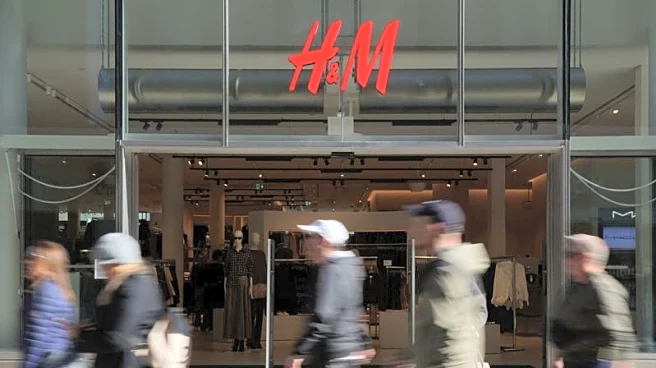What is the story about?
What's Happening?
H&M, the Swedish fashion retailer, reported a significant increase in its third-quarter operating profit, which rose by 40% year-on-year to 4.9 billion Swedish krona ($522 million). This figure surpassed the 3.7 billion Swedish krona forecast by analysts. The company's net sales for the period reached 57 billion Swedish krona, slightly above the expected 56.8 billion. The positive results are attributed to H&M's turnaround strategy, which includes cost controls and a focus on core product lines. CEO Daniel Erver highlighted the company's improved gross margin and strong customer offerings as key factors in the profit increase. However, H&M warned of potential price increases in the U.S. due to tariffs on imports, which are expected to impact the company by late fourth quarter and early next year.
Why It's Important?
H&M's strong financial performance in the third quarter is a positive indicator for the retail sector, showcasing the effectiveness of strategic overhauls in boosting profitability. The company's ability to exceed expectations for two consecutive quarters suggests a successful adaptation to market demands and operational efficiencies. However, the looming impact of U.S. tariffs presents a challenge, as it could lead to higher prices for consumers and potentially affect sales. This situation underscores the broader implications of international trade policies on global businesses and consumer markets. Retailers like H&M must navigate these complexities to maintain competitiveness and profitability.
What's Next?
H&M plans to continue its focus on improving efficiencies and customer offerings. The company is expected to monitor consumer sentiment closely as it considers potential price adjustments in response to U.S. tariffs. The outcome of these adjustments will be crucial in determining H&M's market position in the U.S. and its overall financial performance in the coming quarters. Stakeholders will be watching how the company balances cost pressures with consumer demand, particularly in a challenging economic environment.
AI Generated Content
Do you find this article useful?














